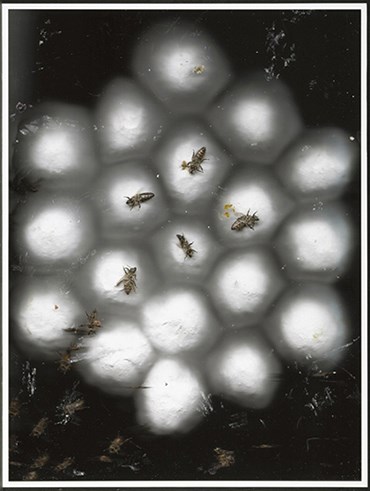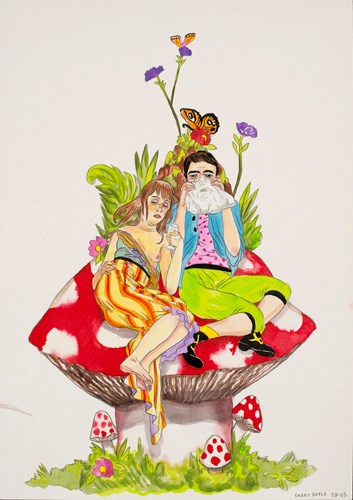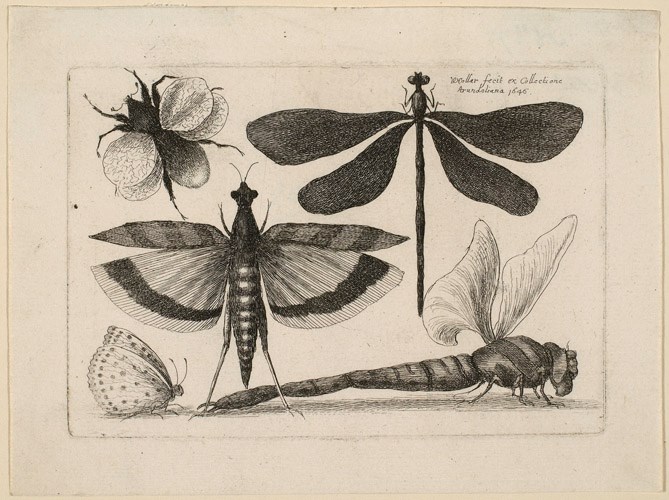In September the Surrey Art Gallery in collaboration with the National Gallery of Canada opened an exhibition entitled Flora and Fauna: 400 Years of Artists Inspired by Nature. VIA had the good fortune of touring the exhibition with National Gallery Curator of Photography, Ann Thomas. The tour was most compelling and Thomas' passion for each and every piece in the show is truly heartfelt. The exhibition was curated by Ann Thomas and Andrea Kunard.
We wanted to dig deeper into the show so we continued our conversation with Thomas, which resulted in this mini interview. We hope that it draws you over to Surrey to check out the exhibition.
VIA: This exhibition features 74 different works that are part of the National Gallery of Canada's permanent collection. The time span of the pieces featured covers 400 years, and the breadth of the exhibition crosses over through the realms of drawing, prints, photographs, paintings and objects. It is a truly impressive survey of work. This iteration of the exhibition is a somewhat condensed version of the original exhibition that was held at the National Gallery earlier this year. Installing in a different setting always leads to dynamic changes in an exhibition. Has the current version of this exhibition in Surrey changed the your perception of the exhibition in any new ways? If so, could you explain?
AT: The exhibition was installed in the Prints, Drawings and Photographs Galleries at the National Gallery so works were more spread out. What I found interesting was that the more concentrated installation at the Surrey Art Gallery allowed some immediate connections to be made between photographers works that you might have otherwise missed.

VIA: If you could own one of these works and enjoy it in your own home what would you select?
AT: This is way too difficult a question to answer because there are many that I would love to spend the rest of my days looking at. What I can say is that I am most profoundly attracted to the works that show that humankind, the natural world and history are all part of one narrative – Andrew Putter, Aganetha Dyck, Joel Sternfeld’s photographs make that point- and that we ignore this interdependence at our peril.
VIA: If you were Isabella Abbott the famous Hawaiian botanist, what piece would be your favourite piece from the exhibition?
AT: I would wonder where the drawings of algae were for a start. Once over my disappointment that there weren’t any, I would be compelled to find something quite different and be delighted by Lorraine Gilbert’s very contemporary way of paying homage to the variety of woodland plant species.

VIA: What work in this exhibition do you think artist Egon Shiele would be drawn to?
AT: He might have been drawn to another figurative painter’s work such as Lucien Freud’s Garden in Winter, a spot that the artist returned to and drew whenever he felt overwhelmed by the demands of life.
VIA: What work in this exhibition do you think David Suzuki would be drawn to and why?
While Aganetha Dyck’s Hive Scans or Wenzel Hollar’s detailed recordings of moths would capture his attention as a scientist, I think Jim Breukelman’s Hot Properties series would especially resonate with him. Born and raised in Vancouver the city and the region’s beauty and natural fecundity inspired his love of the natural world and his desire to make us better custodians of it. I think he would get the craziness and the visual charm of Jim’s work on Vancouver houses.

VIA: Were there any surprises when you opened this exhibition in terms of reactions to particular pieces in the show?
No. everyone seemed really engrossed in the exhibition, as I would have expected from British Columbians.
VIA: Were there any works from the original exhibition that you wished were also part of the Surrey exhibition?
I deeply regret that we could not travel Laurie Walker’s Pavane pour une infante défunte (Pavane for a Dead Princess )1997. A pink limestone casket (133.5 x 61 x 51.5 cm) whose silk interior is completely covered with butterfly specimens, it is a breathtakingly fine homage to the fragility of our ecosystems, and the extraordinary beauty of a species.
VIA: What has the response been from visiting artists who have works in the exhibition? How do they see their work fitting into this larger context?
They really enjoyed seeing their work in this long trajectory of time and being able to see how the dialogue between artist and nature is essentially the same but how the means of expressing oneself have changed radically today. Most of today’s artists and photographers are not looking at nature merely as subject matter but are highly conscious of its political dimension – both flora and fauna – and at the same time making visually compelling and thoughtful images and objects.
VIA: In your tour a few weeks ago that you highlighted that artists have always long been inspired by nature and they continue to work with flora and fauna in traditional as well as contemporary ways. You also stated that this exhibition was an exciting opportunity to show the strength of the National Gallery's expansive Permanent Collection. Are there other important themes or concepts within this exhibition that you hope visitors will take away with them?
I hope, of course, that visitors will leave the exhibition understanding how important this relationship of humankind to nature has been and still is, especially to artists. The evidence of environmental degradation, species loss, climate change is overwhelming. I am not alone in asking whether a world bereft of majestic mountains, rich plant life, trees, animals, birds, clean and abundant water, is one worth living in. If the recently published statistic that 50% of wild life has disappeared over the past forty years is correct, what kind of world are we leaving to future generations?
VIA: Will the exhibition be travelling to another destination once it wraps up in Surrey?
Unfortunately, not. As many of the works are photographs and other types of works on paper, their exposure to light has to be carefully monitored so that we can ensure that future generations will be able to enjoy them.
Flora and Fauna: 400 Years of Artists Inspired by Nature - Surrey Art Gallery
On exhibit until the 14th of December. The Surrey Art Gallery is open Tuesday-Thursday 9am-9pm, Friday 9am-5pm, Saturday 10am-5pm and Sunday 12noon-5pm.
Thank you to the Surrey Art Gallery and the National Gallery of Canada for taking the time to share this exhibition with Vancouver Is Awesome.


